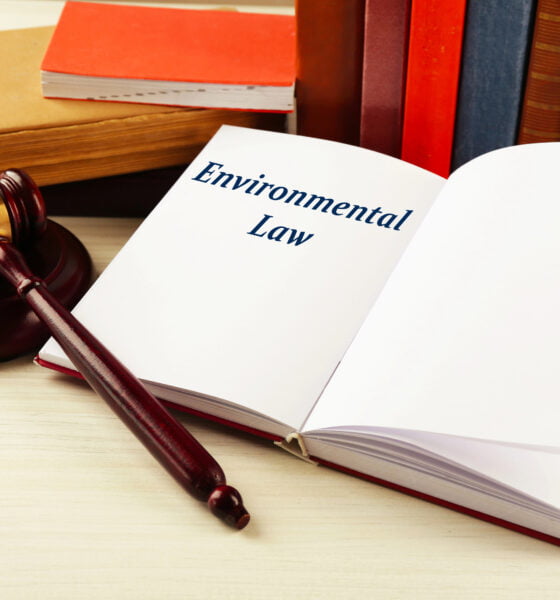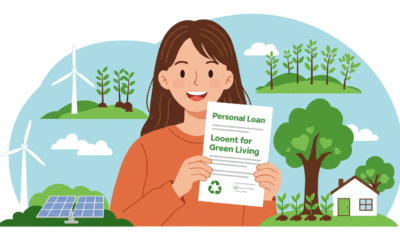A growing number of people are expressing concerns about environmentalism in 2024. Last year, Pew Research conducted a poll showing that 54% of people believe that climate change is a serious threat. The portion of the population that has any concerns about the planet is even higher.
Sadly, many people don’t know how to help the planet. There are a lot of activists out there, but they don’t always get their message across. Some of them do so in ways that harms their cause. For example, just today, BBC reported that some Stop Oil protesters created an uproar by spraying Stonehenge with orange paint.
We have some guidelines on how to live green. However, it is important to also incentivize others to be more sustainable. One way to do so is by filing lawsuits against companies that harm the planet.
We talked about how water contamination lawsuits can discourage companies from polluting the water. Environmental injury lawsuits can do the same.
How to Encourage Companies to Be Greener with Environmental Lawsuits
From the Deepwater Horizon oil spill to the Flint water crisis, environmental incidents can wreak havoc on our environment and kill people in the process. Just recently, a trial began for Navy families in Hawaii who were drinking water tainted with jet fuel.
Environmental injuries refer to any health consequences caused by exposure to environmental hazards. Common examples include contaminated water, illness from air pollution, and chemical spills. These hazards often come from factories, refineries, vehicle exhaust, hazardous waste disposal sites, agricultural chemicals, and natural disasters.
It’s important to know your rights when it comes to these dangerous situations. Keep reading to learn more about environmental injuries and how to hold the responsible parties accountable for the damage they cause.
Types of Environmental Injuries
Environmental hazards can occur anywhere in the world, but some locations are more susceptible than others. For example, Texas has been identified as the state with the most chemical exposures. This is due to the high number of plants, refineries, and oil drilling operations in Texas. Many residents have had to file a Texas injury claim to get the compensation they need to treat their injury or illness, such as asthma or cancer.
Below are some of the environmental injuries that can and do occur around the country.
Illness from Air Pollution
Exposure to air pollution is a serious health concern, leading to a range of illnesses such as respiratory diseases and cardiovascular problems. Common sources of air pollution include vehicle emissions, industrial emissions, and wildfires.
These pollutants contain harmful particulates and gases that can penetrate deep into the lungs, causing chronic respiratory conditions and aggravating existing health issues like asthma. Long-term exposure to polluted air can also increase the risk of heart disease and other cardiovascular problems.
Water Contamination
Contaminated water can result in severe health problems, including gastrointestinal illnesses, developmental issues in children, and lead poisoning. The contamination often stems from industrial discharge, agricultural runoff, and aging infrastructure that leaches harmful substances into the water supply. Pollutants such as heavy metals, pesticides, and industrial chemicals compromise water quality, posing a threat to public health. Children are particularly vulnerable to these contaminants, which can impair physical and cognitive development.
One recent example was the Camp Lejeune water contamination incident, which exposed military members and their families to toxic chemicals.
Chemical Spills and Toxic Exposure
Chemical spills and toxic exposure can occur from industrial accidents, illegal dumping of hazardous substances, and exposure to pesticides. These types of incidents can cause immediate and long-term health risks, such as chemical burns, poisoning, and an increased likelihood of developing cancer.
One example is the train that derailed in Ohio in February 2023. It caused massive hazardous chemical spills, fire, and a mushroom cloud of contamination. While the full health effects of this disaster are still being studied, local residents report symptoms like headaches, nosebleeds, rashes, and respiratory issues.
Soil Contamination
Soil contamination can lead to a variety of health issues, including skin diseases, respiratory problems, and neurological disorders. This contamination is often the result of hazardous waste sites, the use of pesticides, and industrial activities. Harmful chemicals in the soil can be absorbed through the skin, inhaled, or ingested through contaminated food, leading to an array of health complications. The presence of toxic substances in soil can have long-lasting effects on human health and the environment.
Radiation Exposure
Radiation exposure is a grave health hazard that can cause cancer, radiation sickness, and genetic mutations. Sources of radiation exposure include nuclear accidents and the improper disposal of radioactive materials. Acute radiation sickness can occur with high doses of exposure, causing immediate and severe health effects. Long-term exposure, even at lower levels, increases the risk of cancer and can lead to genetic mutations that affect future generations.
Noise Pollution
Noise pollution contributes to various health issues such as hearing loss, stress-related illnesses, and sleep disturbances. Common sources of noise pollution include construction sites, industrial activities, and transportation. Persistent exposure to high noise levels can lead to permanent hearing damage and increase stress levels, which in turn can cause cardiovascular problems and other stress-related illnesses. Additionally, excessive noise disrupts sleep patterns, leading to a host of related health issues.
Legal Basis for Filing Environmental Injury Lawsuits
There are a few different types of lawsuits that could apply to these situations. The first option is a personal injury claim. These claims can be filed any time a person sustains an injury or illness that was caused by a person or entity’s negligence. They are generally used for smaller incidents where one person was affected, like a car accident or slip and fall, however they could apply to an environmental injury case too.
Toxic torts are a type of personal injury claim that is specifically reserved for harm caused by exposure to a dangerous substance. Toxic tort cases typically involve individuals or groups who have suffered health problems due to exposure to these hazardous substances. These cases often involve long-term illnesses that developed over time, like cancer.
A class action lawsuit is the best type of claim for when a large group of people are affected by the same environmental issue. It allows them to combine their claims into a single, more powerful legal action.
Steps to Take If You Are Affected by Environmental Hazards
Environmental hazards can pose serious health risks, and it’s crucial to take appropriate steps if you believe you have been affected. Here’s a guide to navigating this challenging situation.
Seek Medical Attention: The first and most critical step is to seek medical attention. Obtaining a proper medical diagnosis and treatment is essential for your health and well-being. A healthcare professional can provide a clear assessment of any conditions caused or exacerbated by the environmental hazard. Additionally, documenting your health issues through medical records is vital as it serves as evidence should you pursue legal action.
Document the Environmental Hazard: Thoroughly documenting the environmental hazard is crucial. Keep detailed records of the source of exposure, such as photos, videos, and reports. These records help establish the existence of the hazard and your exposure to it. Furthermore, gather evidence linking the hazard to your health issues. This can include medical records showing the correlation between your condition and the exposure, as well as expert testimony from environmental specialists or healthcare providers.
Consult with a Lawyer: After seeking medical attention and documenting the hazard, consult with a lawyer who specializes in environmental law or personal injury cases. An experienced lawyer can provide professional legal advice and assess the viability of your case. They will help you understand your rights and the potential for compensation, guiding you through the legal complexities involved in environmental hazard cases.
File the Lawsuit: If your lawyer determines that you have a viable case, the next step is to file a lawsuit. This process begins with filing a claim, followed by potential court proceedings if a settlement cannot be reached. Your lawyer will navigate the legal system on your behalf, advocating for your rights and seeking compensation for your injuries. Possible outcomes include reimbursement for medical expenses, punitive damages to penalize the responsible party, and compensation for pain and suffering.
Challenges in Environmental Injury Lawsuits
Pursuing an environmental injury lawsuit can be a daunting task due to several inherent challenges. Understanding these difficulties is crucial for building a strong case and effectively seeking justice and compensation.
Proving Causation
One of the most significant challenges in environmental injury lawsuits is proving causation. This involves establishing a direct link between the health issues you are experiencing and the environmental hazards to which you were exposed. Unlike other personal injury cases where the cause of harm might be immediately apparent, environmental injury cases often involve long-term exposure to pollutants or toxins. The effects of these exposures might not manifest until years later, making it difficult to connect the dots. Detailed medical records, scientific studies, and expert testimony are often required to demonstrate that the environmental hazard directly caused your health problems.
Gathering Sufficient Evidence
Another critical challenge is gathering sufficient evidence. Thorough documentation of both the environmental hazard and its impact on your health is essential. This includes keeping records such as photos and videos of the source of exposure, environmental reports, and personal medical records. Additionally, expert testimony from environmental scientists, toxicologists, and medical professionals can provide crucial support for your claims. Without comprehensive and convincing evidence, proving your case in court can be extremely difficult.
Statute of Limitations
The statute of limitations is another important factor to consider in environmental injury lawsuits. This legal time limit dictates how long you have to file a claim after discovering the injury. In many jurisdictions, the clock starts ticking from the date you first became aware of the harm or reasonably should have become aware of it. The statute of limitations for environmental injury cases can vary widely, so it’s essential to act promptly. Delaying action can result in losing your right to file a lawsuit altogether, regardless of the merits of your case.
Resources
Below are some resources for individuals and communities dealing with environmental hazards and related health issues.
- Environmental Defense Fund (EDF): EDF is a nonprofit organization that works on environmental issues and provides legal assistance for environmental justice cases. www.edf.org
- Earthjustice: A nonprofit public interest organization that provides legal representation in environmental cases, often at no cost to clients. www.earthjustice.org
- National Resources Defense Council (NRDC): NRDC works to protect the environment through legal action and advocacy, offering resources and support for environmental issues. www.nrdc.org
- Texas RioGrande Legal Aid (TRLA): TRLA provides free legal services to low-income residents of Texas, including those affected by environmental hazards. www.trla.org
- Public Justice: A national nonprofit legal advocacy organization that takes on impactful cases, including those involving environmental justice. www.publicjustice.net


 Environment10 months ago
Environment10 months agoAre Polymer Banknotes: an Eco-Friendly Trend or a Groundswell?

 Environment11 months ago
Environment11 months agoEco-Friendly Home Improvements: Top 7 Upgrades for 2025

 Features9 months ago
Features9 months agoEco-Friendly Cryptocurrencies: Sustainable Investment Choices

 Features10 months ago
Features10 months agoEco-Friendly Crypto Traders Must Find the Right Exchange































